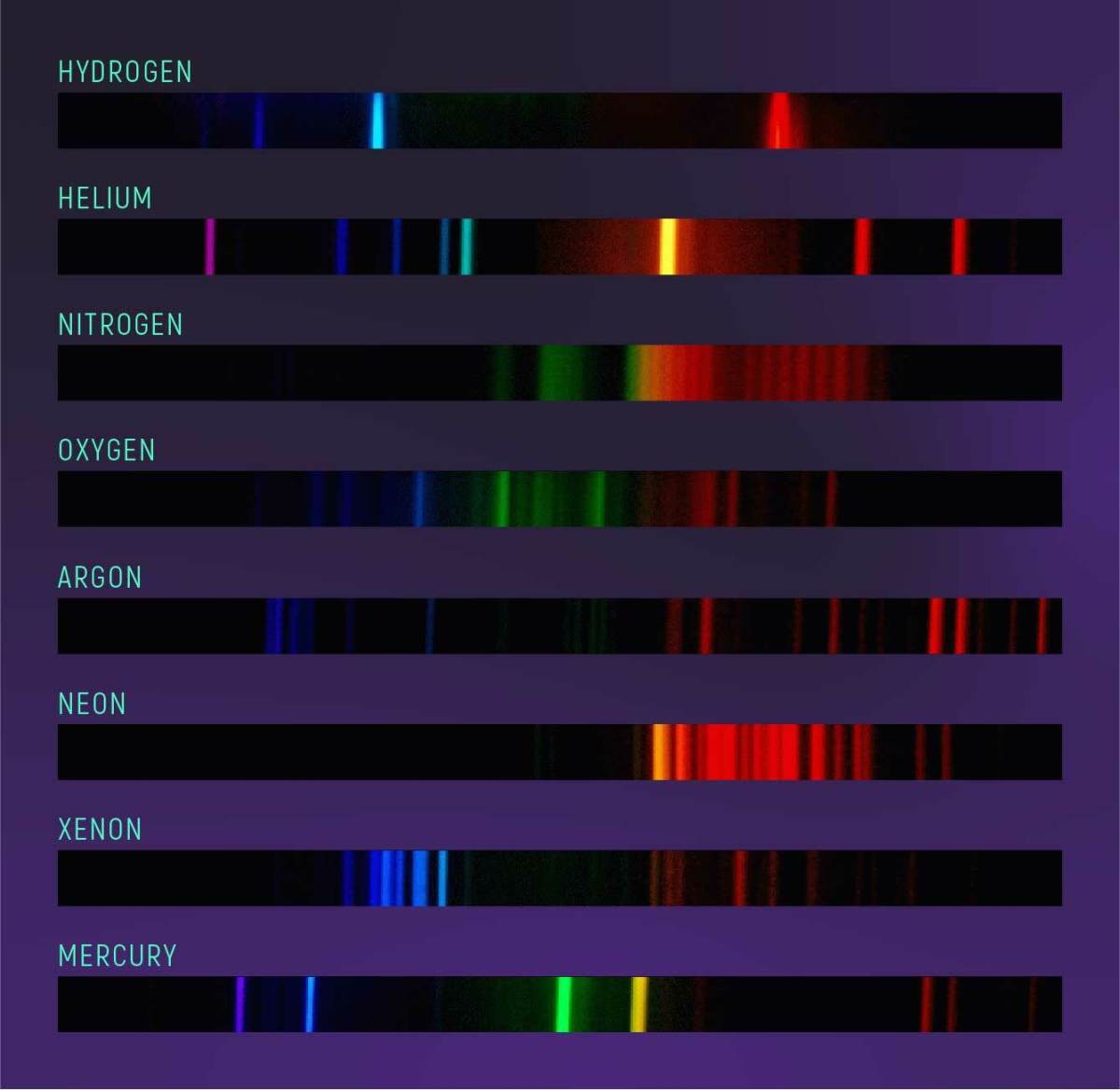Einstein's Theory of Relativity...Simplified
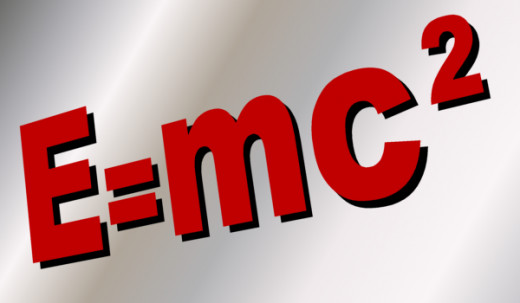
Introduction
(Please refer to the glossary at the end of the article for help with bold, italicized terms.)
However improbable it might seem in terms of current scientific understanding, faster-than-light travel cannot be dismissed entirely as mere fantasy or impossible in terms of physics. The theoreticians may yet have some surprises in store for us.—Physicist Andrew J.H. Clark and David H. Clark, PhD.[i]
What is the cosmic speed limit? According to special relativity, it is light. Macroscopic objects will never have the ability to travel at or faster than light. The only thing exempt from this law is space itself. Only things moving around within space cannot exceed the speed-of-light barrier. Will science discover a way around this prevailing speed limit? If quantum engineers discover a method to bend or warp space, they may find a loophole in the cosmic speed limit after all.
It is not so much objects are unable to travel faster than light, just unable to cross the speed-of-light barrier. It would require an infinite amount of energy to propel a particle or object up to or past it. At the same time, it would require an infinite amount of energy to slow a particle to below the light-speed barrier.
Tachyons are hypothetical entities that travel above the speed of light. Many cosmologists believe they do not exist. Tardons, or everyday particles and objects, are all other particles that travel below it.
The speed of light equals 186,284 miles per second. This speed never changes no matter the reference frame from which it is measured. Whether one is stationary, traveling at 70 miles per hour, or traveling at half the speed of light either toward or away from a measuring source, the light-speed measurement remains constant.
One light-year is equivalent to five trillion miles, or the distance light travels in one year. It takes one second for light to reach Earth from the Moon, eight minutes from the Sun, four years from the nearest star, Proxima Centauri, 2.5 million years from the Andromeda Galaxy, and 10 billion years from distant quasars.
Particle accelerators can propel small entities like muons at 99.5% the speed of light, or 667 million mph. Energy requirements to propel a macroscopic object anywhere near that speed, such as a spacecraft and occupant, would be near infinite. Current laws of physics, notwithstanding economics, prohibit such endeavors.
If air is at rest relative to a stationary observer, sound waves will move toward that person at 700 mph. If the air is moving at 50 mph toward the observer, the sound will move toward him at an increased rate of 750 mph. Likewise, if air is moving away from the individual at 50 mph, the sound will travel toward him at a reduced speed of 650 mph.
Light does not move in this manner since it has no medium like sound waves do through the air. Light waves travel in the direction of person at a fixed speed no matter how fast or in which direction she is moving to or from its source. Light travels at the same speed relative to any observer in any frame of reference. The relative measurements from these differing perspectives, however, will produce varying results. The following section on relativity explains this behavior in more depth.
Quantum physics reveals how light is both a wave and a particle though not at the same time. It exhibits both properties depending on how one is able to measure it and what he is looking for. Even so, wave-particle duality results are complimentary, not contradictory. Light has both wave and particle aspects when looking for each property separate from the other, but both properties are unable to manifest themselves at the same time. Light is indeed a very peculiar phenomenon.
[i] Clark, Andrew J.H.; Clark, David H. Aliens. New York: Fromm International, 1999, p. 203.
Figure 1
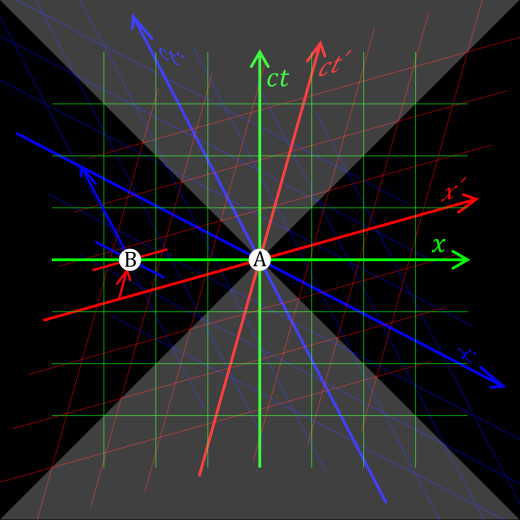
Special Relativity
…we must embrace Einstein’s ideas [of relative time] but move on. The orthodox account of time frequently leaves us stranded, surrounded by a welter of puzzles and paradoxes. In my view, Einstein’s time is inadequate to explain fully the physical universe and our perception of it—Paul Davies[i]
What does it mean to be relative to something? The basic definitions of relative are, “Having relation or reference,” or, “Not absolute or existing by itself; relevant.”[ii]
In June 1905, Einstein wrote one of three papers while working at the Swiss Patent Office in Bern. That single paper, later called the theory of special relativity, forever changed how scientists conceptualize space, time, and physical reality. (See Figure 2.1 for a model.)
Physicists admit they must abandon some commonsense notions of space and time to comprehend Einstein’s complex theories of relativity. Of course, that depends on what one considers “common” sense. Einstein discarded Isaac Newton’s commonsense depiction of absolute space and time with no experimental evidence to back his own. His, then, unverifiable insights of how the laws of physics ought to behave were based on commonsense principles, at least according to him. Meanwhile, the remainder of humanity struggled to keep up. What might seem like common sense to one might appear absurd to another. People should not abandon commonsense intuition when making sense of the Universe, rather amend it where necessary.
What is the biggest difference between special and general relativity? Special relativity is special because it is restricted to observers in uniform motion. General relativity removes the restrictions of uniform motion, making the laws of physics equivalent for all observers no matter what state of motion. Light is the predominant focus of special relativity, gravity of general.
The speed of something normally travels relative to its medium. For water waves, it is water; for sound waves, air; and for earthquake waves, the Earth. Light is the exception and travels at a constant speed without any medium.
During the nineteenth century, scientists believed all of space contained a continuous medium, called the ether. Light and radio signals moved in this ether, just as sound travels as pressure waves through the air. Scientists looked for the elastic properties of the ether expecting light to travel through it at some fixed speed. Its speed was thought to be determined by how fast and in which direction one moved relative to it. Later experiments would expose this assumption as incorrect.
In 1887, Albert Michelson and Edward Morley carried out the infamous Michelson-Morley experiments at the Case Institute in Cleveland, Ohio to verify the ether hypothesis. It would turn out initial speculation was incorrect. Light travels at a fixed speed relative to an observer in any state of motion. It does not travel at a different speed relative to someone traveling faster, even at 10%, 50%, or 90% the speed of light. How this appears to everyone else, however, is a different story altogether. What is a reference frame? The answer depends on where one does the calculations. In a car, it is the car; in a spaceship, the spaceship; standing on Earth, the planet, and so on. In what frame of reference are the laws of physics valid? The answer is…in all of them. To say, I am moving, is a dichotomy, because only relative motion matters. Relativity, put simply, is that the laws of physics are identical for all observers in uniform motion. Commonsense ideas of space and time are discarded to comprehend these implications, at least in a sense. The mechanics of relativity forces one to alter such notions.
Common sense is built on limited experience. Most people are able to comprehend situations from a limited number of reference frames: the Earth and a few moving vehicles. Many assumptions made by the general population regarding physical reality may be accurate, just not relativistically correct.
E=mc² means that an object with mass (m) contains an amount of energy (e) equivalent to that mass multiplied by the speed of light (c) squared. This equation works for all energy transformations. Chemical reactions involved in burning coal or gasoline, metabolic reactions of food digestion, and nuclear reactions that power the Sun are all forms of this basic energy transformation. A stretched rubber band weighs more than a non-stretched one because of the energy put into it.
E=mc² signifies why no object may travel faster than light. The energy required to accelerate a spaceship increases, including its mass, as the object approaches the speed of light. Like energy, mass manifests itself as inertia. It would require an infinite amount of energy to increase the mass of an object to the speed of light, therefore is not possible.
But not everything is relative. As far as we know, only the laws of physics are absolute. What if these laws determine there is a way to travel around the speed of light? Perhaps such a discovery would lend additional credence to the idea not everything is relative, including relativity itself.
Special relativity is experimentally verifiable, so is more than just a theory. Unfortunately, Einstein died on April 18, 1955 before he would see it verified.
According to special relativity, time slows for objects moving close to the speed of light, at least from the viewpoint of a stationary observer. This means there is no universal quantity called time all clocks measure. Instead, time is relative to the individual measuring it. Two people at rest with respect to one another will measure the same time but not if they are on the move. A number of experiments confirm this phenomenon.
But would the idea of a collective present for all potential beings in the Universe make special relativity itself relative, restricted to how and where it is being measured? If the concept of relative time is valid, does it dismiss the possibility of a standard, universal time comparable and applicable to all potential observers? Does time exist in the first place?
[i] Davies, Paul. About Time: Einstein’s Unfinished Revolution. New York: Simon & Schuster, 1996, p. 12.
[ii] New Webster’s Expanded Dictionary, 2005. “Relative,” p. 235.
Figure 2
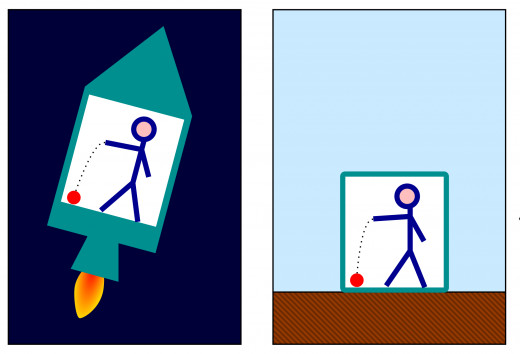
General Relativity
In 1913, Albert Einstein and Marcel Grossman wrote a paper outlining gravitational forces are an expression of the fact that space-time is curved as opposed to flat. This idea led to Einstein’s theory of general relativity, published in 1915. Unlike special relativity, which deals with the propagation of light, general relativity has more to do with gravity. According to general relativity, gravity is not a force; rather, it is a warping of space-time that occurs in the presence of mass. Accelerated motion in the absence of gravity is indistinguishable from non-accelerated motion in the presence of it. Gravity is not entirely what it seems, at least not from a meager planetary perspective.
Being in a free-fall in an enclosed frame of reference under the influence of gravity and being in uniform motion in space are, in principle, no different. According to the principle of equivalence, both experiences are identical. (See Figure 2.2 for a visual.)
General relativity declares matter and energy cause space-time to curve. In the absence of outside forces, an object will move in the straightest path possible, geodesic within curved space-time. According to the theory, time runs slower where gravity is stronger. The reason is because light loses energy as it climbs from a gravitating mass, thus extreme gravity produced by a massive body reduces the frequency of light waves. An observer that looks toward a region of strong gravity will witness time running slower in that region. An observer within that region will witness time at a normal pace. This phenomenon is called time dilation.
Earth follows a geodesic in four-dimensional space-time, though it appears to move in a circular, three-dimensional orbit because of how the mass of the Sun curves local space.
Global Positioning System (GPS) satellites must take into account gravitational time dilation for the system to work. If not, its position coordinates would be off by a significant fraction of a mile.
Experiments with precise Cesium-beam clocks prove the time perspective runs slower as it approaches a body with substantial mass. Light waves closer to the body become warped since more gravity denotes increased warpage. Does this prove time travel to the future is possible or only indicate relative reference frames exist in a type of “suspended animation,” localized from the overall, universal one?
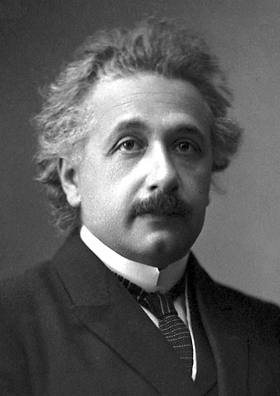
Time Dilation
Stephen Hawking indicates there is a definite relation between the energy of light and its frequency, or number of light waves per second. The length of time between a wave crest of light is longer where it takes more energy to escape Earth’s mass. Thus, from an outside perspective, time appears to run slower for objects closer to Earth. From the perspective of Earth, time appears to run faster for objects farther away. Does this mean relativity argues against a universal reference frame for all observers, or is it nothing more than a gravitational effect on clocks and how our eyes sense light waves?
During New Year’s Eve on December 31, 1999, was there a significant moment all people around the world shared at the same time? Since London celebrated the Ball Drop at midnight and those in New York had yet to, does that mean London was in the present and New York in the past? Watching a live video of it suggests the moment can be shared at the same time, just not the event. This example does not apply to relativity necessarily, but was a minor thought experiment to illustrate how relative time can be a shared experience. Time as we know it exists because of how we measure it with clocks, not because it is an exclusive, localized portion of all-encompassing reality.
Article Feedback
Was this article helpful?
GLOSSARY
(*Terms devised by the author)
*Collective Present Idea that time does not exist and all potential beings throughout the entire Universe share in a collective, present experience of three-dimensional reality. This interpretation of the Now allows for individual relative experiences and holographic interpretations of time dilation where extreme gravity is present, but they all remain tethered to the collective-present reality. See also continuous present.
Ether Once thought of as the medium in which light waves travel, much like sound waves do through air. Einstein’s theory of special relativity proves there is no medium for light waves like there is for sound since light travels at a fixed speed no matter perspective or conditions.
General Relativity Albert Einstein’s theory of the association between gravity and geometry, developed in 1916. It is a proven theory accepted by physicists to explain gravity as a geometric property of curved space and time, or space-time. Time is a required component of the association between objects and their gravitational influence on space. You cannot measure gravity without time. If GPS satellites did not take into account general relativity, they would not work properly. Special relativity, on the other hand, deals more with properties of the speed of light. See also special relativity.
Geodesic The shortest path possible between two points on a curved line or sphere.
Gravitational Force The weakest and most mysterious of the four forces of nature. The graviton, or particle related to the force of gravity, has yet to be verified since it is thought to exist in hidden dimensions. Physicists believe this is why it appears so weak when compared to the other three forces though it feels strong to us. For example, a small magnet can act against the entire force of gravity by lifting a paperclip off the ground.
Principle of Equivalence Related to gravity and Einstein’s theory of general relativity. How does a person know her frame of reference on a gravitating body, like Earth, is accurate for conducting gravitational experiments? An accelerated frame of reference, such as Earth spinning on its axis and around the Sun, might not produce a uniform gravitational field for the purpose of producing accurate experimental results.
Quantum Mechanics Study of physics dealing with atomic and subatomic particles, in particular their behavior and interactions with energy and matter. Different from classical mechanics, which deals with the interactions and predictable behavior of macroscopic objects.
”Relativistically” Correct Observations of a particular relativity experiment from one’s unique perspective. An experiment becomes “relativistically correct” since observations from another’s perspective might produce different results, in particular ones made from a location where there is more or less gravity.
Special Relativity Einstein’s theory that, in the absence of gravity, all scientific observations are the same for all observers. Special relativity is basically general relativity minus gravity. It is a special case of general relativity based on the same principles. If two people are traveling at different speeds in vacuum, they will make different measurements with respect to each other even though the speed of light remains constant. General relativity deals with the properties of curved space-time and the gravitational influence of relative reference frames and special relativity the speed of light and either relative or non-relative reference frames. The differences can be somewhat tedious. See also general relativity.
Tachyons Hypothetical particles that move faster than light, but most physicists believe they are nonexistent. Though macroscopic objects require too much energy to reach the speed of light, subatomic particles may be an exception. If such a particle exists, applications might include sending a direct message faster than the light-speed limit.
Tardons Particles that travel slower than light. All known matter is made up of tardons.
Time Dilation Occurs in accordance with the theory of relativity as a result of differing reference frames, velocities, and the lack or presence of gravity. In the vacuum of space where all perspectives are equivalent, the passage of time for someone moving will be slightly slower than for another standing still. This creates time dilation, which can be measured using precise atomic clocks and calculated with special relativity. The closer one gets to the speed of light, the slower his clock ticks relative to outside observers. According to general relativity, clocks that tick farther away from a gravitating body will run faster than those closer to one. Scientists can measure this dilation with an atomic clock in space and one on the surface of the planet. GPS satellites would not work right without these adjustments. But is it an actual effect on time or merely a holographic illusion of gravity on clocks when they are moving or are near a gravitating body?








